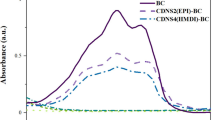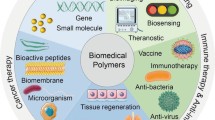Abstract
Purpose
TXA9, a novel cardiac glycoside, has a potent anti-proliferative effect against A549 human lung cancer cells, however, possesses a poor water-solubility and a rapid metabolic rate in vivo which limited the further development of TXA9. To overcome the shortcomings of TXA9, four polymer prodrugs of TXA9 were designed and synthesized.
Methods
Poly (ethylene glycol) monomethyl ether (mPEG) and α-tocopherol polyethylene glycol succinate (TPGS) were applied to modify TXA9 via carbonate ester and glycine linkers respectively to obtain four polymer prodrugs. The water-solubility and stability of prodrugs were studied in vitro while their pharmacokinetic behaviors and antitumor activity were investigated in vivo.
Results
The water-solubility of TXA9 was obviously increased and prodrugs with glycine linkers showed a better stability in rat plasma. Their pharmacokinetic investigation found that the t1/2 and AUC0-∞ of TPGS-Gly-TXA9 was increased by 80- and 9.6-fold compared with that of TXA9, which was more superior than the other three prodrugs. More importantly, the tumor inhibition rate of TPGS-Gly-TXA9 (43.81%) on A549 xenograft nude mice was significantly increased compared with that of TXA9 (25.26%).
Conclusion
The above results suggested that TPGS-Gly-TXA9 possessed better antitumor efficiency than TXA9 and could be further investigated as an anti-cancer agent.







Similar content being viewed by others
Abbreviations
- DCC:
-
N, N’-dicyclohexylcarbodiimide
- DMAP:
-
4-Dimethylaminopyridine
- EDCI:
-
1-Ethyl-3-(3-dimethylaminopropyl) carbodiimide hydrochloride
- EPR:
-
Enhanced permeability and retention
- mPEG:
-
Poly (ethylene glycol) monomethyl ether
- NSCLC:
-
Non-small-cell lung cancer
- PEG:
-
Polyethylene glycol
- pNPC:
-
p-Nitrophenyl chloroformate
- TPGS:
-
α-Tocopherol polyethylene glycol succinate
References
Stewart BW, Wild CP. World Cancer report. International Agency for Research on Cancer 2014.
Oser MG, Niederst MJ, Sequist LV, Engelman JA. Transformation from non-small-cell lung cancer to small-cell lung cancer: molecular drivers and cells of origin. Lancet Oncol. 2015;16(4):e165–72.
Xue R, Han N, Xia MY, Ye C, Hao ZH, Wang LH, et al. TXA9, a cardiac glycoside from Streptocaulon juventas , exerts a potent anti-tumor activity against human non-small cell lung cancer cells in vitro and in vivo. Steroids. 2015;94(23):51–9.
Ye C, Wang H, Xue R, Han N, Wang LH, Yang JY, et al. Minor cytotoxic cardenolide glycosides from the root of Streptocaulon juventas. Steroids. 2015;93:39–46.
Greenwald RB, Yun HC, Mcguire J, Conover CD. Effective drug delivery by PEGylated drug conjugates. Adv Drug Deliv Rev. 2003;55(2):217–50.
Banerjee SS, Aher N, Patil R, Khandare J. Poly(ethylene glycol)-Prodrug conjugates: concept, design, and applications. J Drug Deliv. 2012;2012:1–17.
Zhang ZP, Tan SW, Feng SS. Vitamin E TPGS as a molecular biomaterial for drug delivery. Biomaterials. 2012;33(19):4889–906.
Greenwald RB, Gilbert CW, Pendri A, Conover CD, Xia J, Martinez A. Drug delivery systems: water soluble taxol 2'-poly(ethylene glycol) ester prodrugs-design and in vivo effectiveness. J Med Chem. 1996;39(2):424–31.
Sun HP, Zhang Q, Zhang Z, Tong J, Chu DF, Gu JK. Simultaneous quantitative analysis of Polyethylene Glycol (PEG), PEGylated paclitaxel and paclitaxel in rats by MS/MSALL technique with hybrid quadrupole time-of-flight mass spectrometry. J Pharm Biomed Anal. 2017;145:255–61.
Ding Y, Zhang P, Tang XY, Zhang C, Ding S, Ye H, et al. PEG prodrug of gambogic acid: amino acid and dipeptide spacer effects. Polymer. 2012;53(8):1694–702.
Zhao YJ, Wei W, Su ZG, Ma GH. Poly (ethylene glycol) prodrug for anthracyclines via N-Mannich base linker: design, synthesis and biological evaluation. Int J Pharm. 2009;379(1):90–9.
Rowinsky EK, Rizzo J, Ochoa L, Takimoto CH, Forouzesh B, Schwartz G, et al. A phase I and pharmacokinetic study of pegylated camptothecin as a 1-hour infusion every 3 weeks in patients with advanced solid malignancies. J Clin Oncol. 2003;21(1):148–57.
Liu T, Yuan X, Jia TT, Liu C, Ni ZH, Qin ZL, et al. Polymeric prodrug of bufalin for increasing solubility and stability: synthesis and anticancer study in vitro and in vivo. Int J Pharm. 2016;506(1–2):382–93.
Cao N, Feng SS. Doxorubicin conjugated to D-alpha-tocopheryl polyethylene glycol 1000 succinate (TPGS): conjugation chemistry, characterization, in vitro and in vivo evaluation. Biomaterials. 2008;29:3856–65.
Bao YL, Guo YY, Zhuang XT, Li D, Cheng BL, Tan SW, et al. D-α-tocopherol polyethylene glycol succinate-based redox-sensitive paclitaxel prodrug for overcoming multidrug resistance in cancer cells. Mol Pharm. 2014;11(9):3196–209.
Anbharasi V, Cao N, Feng SS. Doxorubicin conjugated to D-alpha-tocopheryl polyethylene glycol succinate and folic acid as a prodrug for targeted chemotherapy. J Biomed Mater Res A. 2010;94A(3):730–43.
Lu L, Yan Z, Weng S, Zhu W, Qin L. Complete regression of xenograft tumors using biodegradable mPEG-PLA-SN38 block copolymer micelles. J Colloids Surf B Biointerfaces. 2016;142:417–23.
Wei Z, Hao J, Yuan S, Li Y, Juan W, Sha X, et al. Paclitaxel-loaded Pluronic P123/F127 mixed polymeric micelles: formulation, optimization and in vitro characterization. Int J Pharm. 2009;376(1–2):176–85.
Hu X, Liu RL, Zhang D, Zhang J, Li ZH, Luan YX. Rational design of an amphiphilic chlorambucil prodrug realizing self-assembled micelles for efficient anticancer therapy. ACS Biomater Sci Eng. 2018;4:973–980.
Lommerse J P M, Price S L, Taylor R. Hydrogen bonding of carbonyl, ether, and ester oxygen atoms with alkanol hydroxyl groups. J Comput Chem. 1997;18(6):757–774.
Hao T, Chen D, Liu K, Qi Y, Li Z. Micelles of d-α-tocopheryl polyethylene glycol 2000 succinate (TPGS 2K) for doxorubicin delivery with reversal of multidrug resistance. ACS Appl Mater Interfaces. 2015;7(32):18064–75.
Vig BS, Huttunen KM, Laine K, Rautio J. Amino acids as promoieties in prodrug design and development. Adv Drug Deliv Rev. 2013;65(10):1370–85.
Pasut G, Veronese FM. Polymer–drug conjugation, recent achievements and general strategies. Prog Polym Sci. 2007;32(8):933–61.
Roy HK, DiBaise JK, Black J, Karolski WJ, Ratashak A, Ansari S. Polyethylene glycol induces apoptosis in HT-29 cells: potential mechanism for chemoprevention of colon cancer. FEBS Lett. 2001;496(2–3):143–6.
Veronese FM, Schiavon O, Pasut G, Mendichi R, Andersson L, Tsirk A, et al. PEG-doxorubicin conjugates:influence of polymer structure on drug release,in vitro cytotoxicity,biodistribution,and antitumor activity. Bioconjug Chem. 2005;16(4):775–84.
Lu B, Huang D, Zheng H, Huang ZJ, Xu PH, Xu HX, et al. Preparation, characterization, and in vitro efficacy of O-carboxymethyl chitosan conjugate of melphalan. Carbohydr Polym. 2013;98(1):36–42.
Sun JJ, Liu YH, Chen YC, Zhao WC, Zhai QY, Rathod S, et al. Doxorubicin delivered by a redox-responsive dasatinib-containing polymeric prodrug carrier for combination therapy. J Control Release. 2017;258:43–55.
Sun X, Guowei W, Hao Z, Shiqi H, Xin L, Jianbin T, et al. The blood clearance kinetics and pathway of polymeric micelles in cancer drug delivery. ACS Nano. 12:6179–92.
Li M, Liang Z, Sun X, Gong T, Zhang Z. A polymeric prodrug of 5-fluorouracil-1-acetic acid using a multi-hydroxyl polyethylene glycol derivative as the drug carrier. PLoS One. 2014;9(11):e112888.
Luo C, Sun J, Liu D, Sun BJ, Lei M, Musetti S, et al. Self-assembled redox dual-responsive prodrug-nanosystem formed by single thioether-bridged paclitaxel-fatty acid conjugate for cancer chemotherapy. Nano Lett. 2016;16(9):5401–8.
Webb BA, Chimenti M, Jacobson MP, Barber DL. Dysregulated pH: a perfect storm for cancer progression. Nat Rev Cancer. 2011;11(9):671–7.
Prasad KN, Kumar B, Yan XD, Hanson AJ, Cole WC. α-Tocopheryl succinate, the Most effective form of vitamin E for adjuvant Cancer treatment: a review. J Am Coll Nutr. 2003;22(2):108–17.
Shanker M, Gopalan B, Patel S, Bocangel D, Chada S, Ramesh R. Vitamin E succinate in combination with mda-7 results in enhanced human ovarian tumor cell killing through modulation of extrinsic and intrinsic apoptotic pathways. Cancer Lett. 2007;254:217–26.
Pathak AK, Singh N, Khanna N, Reddy VG, Prasad KN, Kochupillai V. Potentiation of the effect of paclitaxel and carboplatin by antioxidant mixture on human lung Cancer H520 cells. J Am Coll Nutr. 2002;21(5):416–21.
Author information
Authors and Affiliations
Corresponding author
Additional information
Publisher’s Note
Springer Nature remains neutral with regard to jurisdictional claims in published maps and institutional affiliations.
Electronic Supplementary Material
ESM 1
(DOCX 17393 kb)
Rights and permissions
About this article
Cite this article
Li, Y., Ye, C., Cai, C. et al. Design and Synthesis of Polymer Prodrugs for Improving Water-Solubility, Pharmacokinetic Behavior and Antitumor Efficacy of TXA9. Pharm Res 37, 66 (2020). https://doi.org/10.1007/s11095-020-02789-w
Received:
Accepted:
Published:
DOI: https://doi.org/10.1007/s11095-020-02789-w




